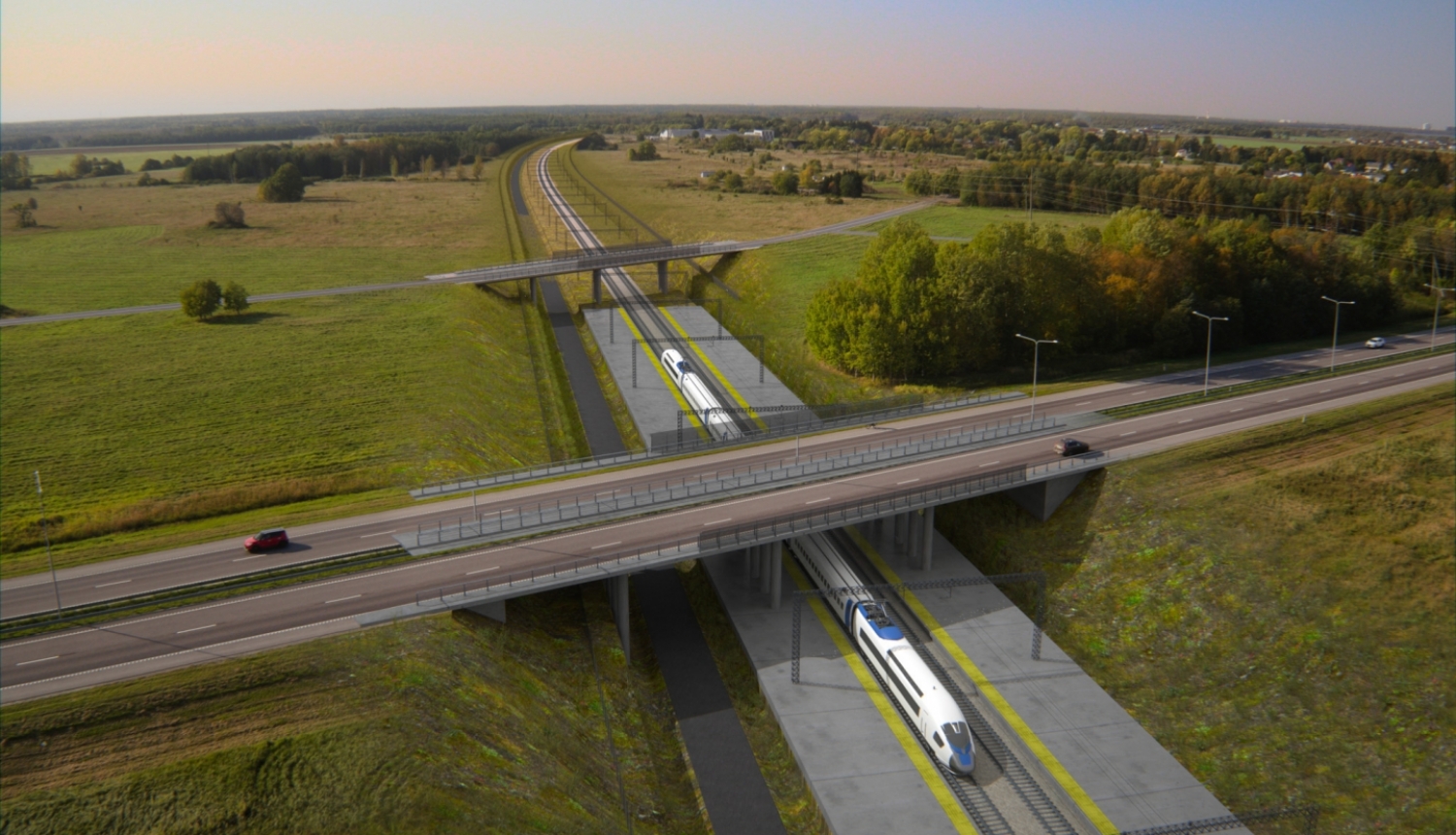Rail Baltica, the largest rail infrastructure project in the history of the Baltic States, has been recognized as a strategic geopolitical necessity. The project aims to connect Lithuania, Latvia, and Estonia with their Western allies through a north-south railway axis using the standard European gauge of 1435 mm. This shift is crucial for the Baltic States' military mobility strategy, enhancing both capacity and integration with Europe.
According to the Center for European Policy Analysis (CEPA), railways are the best option for military logistics and if railways are interoperable with Poland and Germany, they represent the best option for transporting armored vehicles and other heavy military equipment to the Baltic region.
Rail Baltica is designed to serve both civilian and military needs, providing infrastructure and rolling stock capacity for peacetime and potential armed conflicts. Currently, the only 1435 mm link in the region is the Kaunas-Poland border line, which has different technical parameters from those intended for Rail Baltica. Completing the 1435 mm infrastructure is essential for the full integration of the Baltic States into the European Union (EU) rail transport market. Standard gauge railways allow military equipment and troops to be transported across borders without the need to change the gauge, a process that is time-consuming and logistically challenging. This standardization increases the EU's ability to respond to security threats and strengthen vulnerable regions.
Military logistics must also be considered in the context of time-sensitive defense planning during a crisis. Lieutenant General (Ret.) Ben Hodges, former Commanding General of the US Army Europe, highlighted the complexity of military logistics, emphasizing the need to recognize threats, make political and military decisions, and swiftly deploy NATO forces to the affected area. While the first two tasks are challenging to control in advance, the third can be addressed during peacetime by removing existing infrastructure bottlenecks.
Calculated military mobility benefits of Rail Baltica
Military mobility, the rapid and efficient movement of troops and equipment, is crucial for the region’s defence readiness. Rail Baltica's high-speed rail infrastructure is planned to accommodate heavy military equipment, such as tanks and armored vehicles, which are difficult to transport by road. Moreover, transporting an entire military unit on a single train would enable movements without causing major disruptions to road traffic. Rail transport also minimizes wear and tear on road infrastructure, ensuring safer and more efficient movement of specialized cargo, including heavy machinery and potentially hazardous goods. A recent cost-benefit analysis of Rail Baltica revealed that in peacetime, Rail Baltica could replace a 7 km-long military convoy with a single 40-wagon train.
“Connecting the Baltic States to our Western allies through the north-south railway axis must be our strategic priority as enhanced capabilities project a power of deterrence in times of geopolitical sensitivity and volatility,” stressed Kitija Gruškevica, Vice-Chairperson of the Management Board at RB Rail, the central coordinator of the Rail Baltica project.
The project will also integrate the Baltic States into the expanded Trans-European Transport Network, moving towards a standardized railway infrastructure across Europe. Egidijus Lazauskas, CEO at LTG Group, stated, "Rail Baltica will become an important step towards a standardized railway infrastructure across Europe."
Baiba Zauere, Member of the Board of the Rail Baltica national implementing body in Latvia, Eiropas Dzelzceļa līnijas, points out: "Rail remains the most efficient mode of transport for moving large volumes or heavy goods over long distances. Therefore, it is crucial to ensure that the rail network system is suitable for transporting such goods. The Rail Baltica infrastructure is being planned and designed in close cooperation with the responsible institutions to meet the requirements necessary for national defense, from cargo dimensions and loads to enhanced security requirements at stations. Several strategically important objects are also being supported by EU military mobility funds."
Based on expected military movements, Rail Baltica is projected to provide capacity for NATO transports and national armed forces. This is expected to improve Rail Baltica's economic impact by an estimated EUR 2-4 million per annum and enhance the efficiency of military drills. Rail Baltica will enable the swift mobilization and demobilization of heavy forces, ensuring a dynamic and responsive military strategy. It will strengthen the military-industrial ecosystem across the region, improving the efficiency of equipment production and maintenance facilities.
About Rail Baltica
Rail Baltica is one of Europe’s largest high-speed infrastructure projects, aiming to establish a modern, sustainable rail link connecting the Baltic States of Estonia, Latvia, and Lithuania with the broader European rail network. As part of the trans-European transport corridor, Rail Baltica will feature a fully electrified, double-track railway with a standard gauge of 1435 mm, equipped with the European Rail Traffic Management System (ERTMS) and designed to meet European standards. With a design speed of 249 km/h, Rail Baltica will significantly reduce travel times between the Baltic States and major European cities.
This project will provide state-of-the-art infrastructure for passenger, freight, and military mobility, enhancing accessibility and facilitating business, tourism, and cultural exchange. Additionally, Rail Baltica will strengthen the Baltic region’s role as a key transit hub, fostering stronger trade connections and promoting regional cooperation.
For more information:
Signe Nīgale
Head of the Communication and International Relations Department
RB Rail AS
Phone number: +371 29116146
E-mail: signe.nigale@railbaltica.org
www.railbaltica.org



